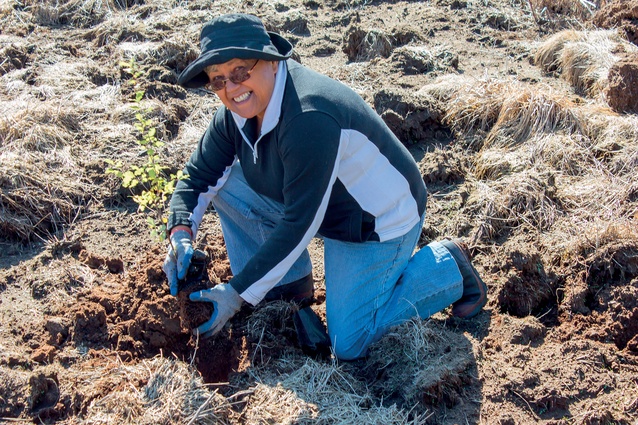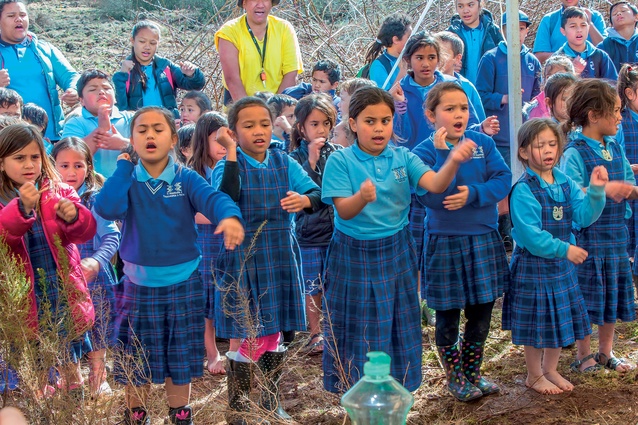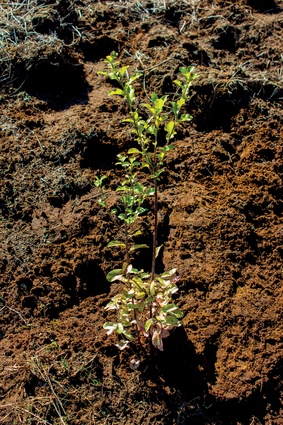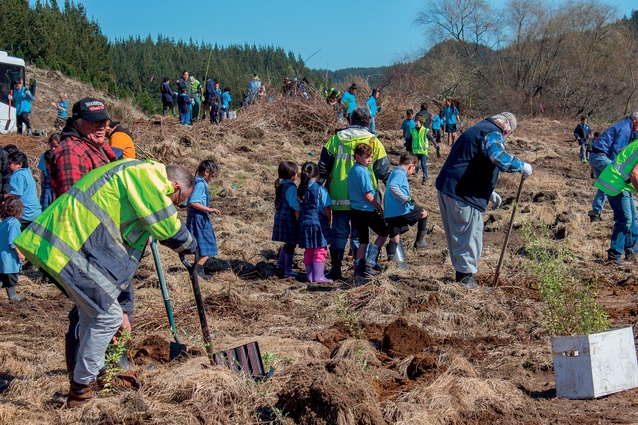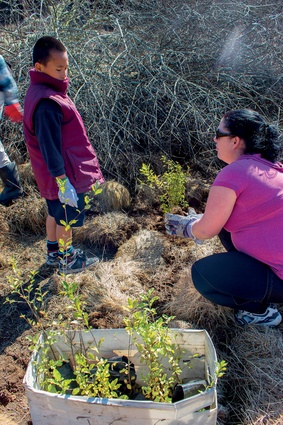Planning for cultural resilience
Thousands of Totara tree seeds will be planted for future generations to use, thanks to the Totara Legacy Project. Senior environmental advisor Phil Wihongi explains this intergenerational approach to developing cultural material resources.
Cultural resilience is a modern catch cry for something Māori tūpuna (ancestors) did intuitively, and which formed a part of daily life and decision-making. As masters of their environment, tūpuna knew the locations of, and actively managed, all resources required to ensure well-being and health of the people and the environment were balanced, so that life, culture and practices could flourish.
Ka ora ngā wai, ka ora te ngāhere, ka tu te mana me te ora o te iwi – When the waters and forests are healthy, the people are well and their mana stands.
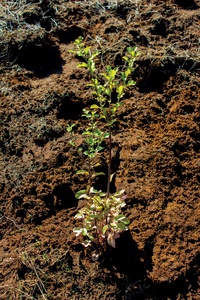
The presence of important cultural resources such as stands of mature forest within one’s takiwā (area of authority) was a matter of great pride and mana (standing/authority) for tūpuna. It is recorded that some resources were actively managed across generations in the exercise of kaitiakitanga, and the laying of tapu or rahui (restrictions of use) over valuable resource areas was often linked to the mana of a Chief or the group itself. The ability of a group to gift important resources for cultural purposes (such as building of waka taua) added significantly to the mana of the gifting group.
Large individual trees were seen as manifestation of man’s whakapapa (genealogy) links to the atua (god) Tane Mahuta, and ritual to acknowledge and respect Tane and other gods of the forest was required when felling these trees. To not carry out the appropriate rituals was to risk the ire of the atua, and this was to be avoided at all costs.
Tōtara (Podocarpus totara) is widely acknowledged by Māori as being one of the most chiefly of trees of the ngāhere (forest), he rakau rangatira (literally, a chiefly tree). The physical properties of both tree and timber are recognised and highly valued by Māori, and references to great tribal leaders often draw comparison to the tōtara – strength, dominance, size, longevity, dependability (amongst other notable qualities). As a timber for cultural uses tōtara is unparalleled and is the preferred timber for traditional purposes – whakairo (carving), construction of wharenui (meeting houses) and waka in most parts of Aotearoa across history to today.
Raukawa, kia mau, kia ora – A thriving Raukawa nation
Raukawa is a contemporary post-settlement iwi and one of the recognised Waikato River iwi who hold mana whenua over a large portion of the central and south Waikato catchment. Whilst a small number of key cultural sites were returned to Raukawa in 2014 through settlement of treaty grievances with the Crown, Raukawa currently have minimal land holdings and therefore limited access to and control of traditional resources and cultural materials that were readily available to their tūpuna.
This lack of access to and control of cultural resources has been front of mind for Raukawa rangatira (leaders) and kaumātua (elders) over the last decade. A core group of Raukawa rangatira have inspired and led development of the Tōtara Legacy Project (TLP), an innovative and collaborative initiative which aims to make Raukawa once again fully self-sufficient in its need for tōtara for cultural purposes, set across an intergenerational time frame.
To-tara Legacy Project – He aha ai? (What is it?)
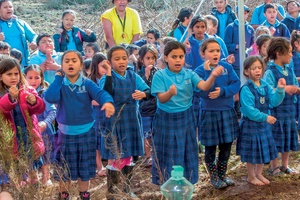
The TLP is a collaboration between Raukawa, Hancock Forest Management (one of the largest managers of plantation forests in Aotearoa) and SCION (Crown Research Institute for forestry and wood products). The TLP will develop managed plantations of tōtara within the Kinleith Forest east of Tokoroa, exclusively for the use of forthcoming generations of Raukawa uri. The TLP focuses on producing high-grade, clean and clear tōtara logs for harvest in 2140 – a goal that is unashamedly silviculture, albeit with a strong cultural use end-focus.
With the assistance of SCION, Raukawa adopted a takiwā-sourcing approach to seed sourcing for this project. A small number of mature trees which display the requisite physical attributes (i.e. healthy mature specimens with long, straight and clear trunks) were identified by SCION scientists within the Pureora Forest Park and all project seed was sourced from these trees. These seeds are currently being grown at SCION’s nursery in Rotorua under a commercial agreement, and will be ready for planting at the plantation sites in 2019.
Raukawa have undertaken a rigorous approach to planning for this initiative, recognising the need to respond to district and regional bio-diversity and land-use imperatives, alongside satisfying requirements for planting and harvesting indigenous forests under the Forestry Act. As the plantations are to be planted on whenua owned by another party (Taumata Plantations), a profit-a-prendre agreement has been formalised to ensure that harvest rights to the tōtara remain with Raukawa, irrespective of future ownership of the whenua the trees stand on. Alongside this planning aspect, a rigorous site selection methodology identified areas with minimal gradient and road frontage for the plantations to ensure that future harvesting could be carried out with minimal difficulty.
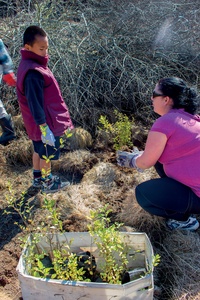
At all stages of the planning and implementation, Raukawa tikanga and kawa has been observed. This has included blessings of site, seeds, trees and process, the involvement of kaumātua across the planning phases and the erection of a pou-whenua at the first site, Taranaki (the traditional Raukawa name for the area). Trees will be provided to all Raukawa marae at the time of planting to ensure that the mauri and wairua of the plantations is present and visible at each of the marae over the growing period. Additionally, a time-capsule is to be placed at the Taranaki site, to convey both hard-copy and digital messages from the current generation to their future descendants.
An initial Mānuka/Kohuhu nurse crop was planted at the first plantation site by Raukawa, project partners and members of the broader community in mid-August 2015. This was a highly memorable day for all concerned, bringing together all ages from tamariki (children) to kauma-tua. These 3,000 trees will be managed over the next three years, at which point a planting grid will be cut for the tōtara to be planted into. It is expected that the nurse crop should have attained canopy cover, which will force the tōtara to compete for light and to promote height over bushy form.
A key aspiration of Raukawa kaumātua is to share the lessons and knowledge that have been generated through the TLP with other groups looking to undertake similar initiatives, and Raukawa look forward to discussing this project with other Māori groups or any interested parties.
Te Torino haere whakamua, whakamuri – The continuum is constantly moving both in and out, connecting past, present and future.
The Totara Legacy Project is seen as an initial step by Raukawa towards developing a long term sustainable network of the cultural material resources that define Raukawa culture and practices, under the tikanga, mana and control of Raukawa.

